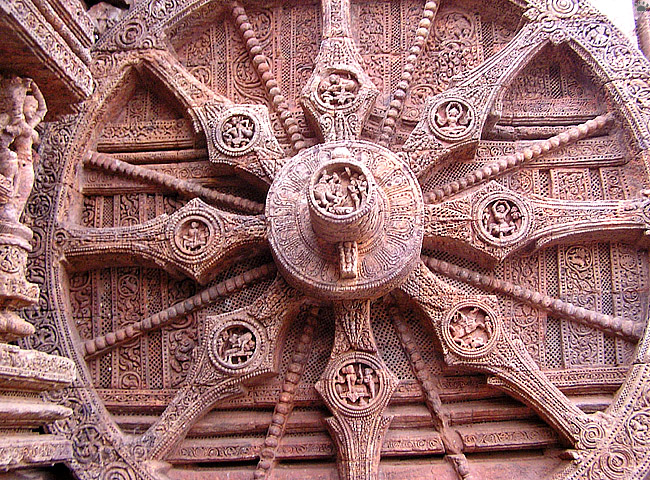
Wheel of Sun Temple, Konark, Orissa.
Part 14. Temples of Orissa
Orissa is one of the most interesting states in India, with numerous historical and natural monuments. Its early history was filled with struggles between Buddhism, Jainism and Brahmanism, but since the 7th century AD it has firmly established itself as one of the major centers of Hinduism. In the following thousand years, a bunch of spectacular temples has been built in the coastal lowlands.
 |
 |
| Sun Temple, Konark, Orissa. |
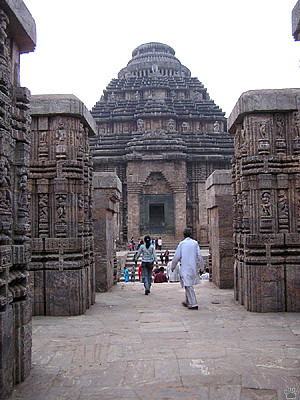
Remains of bhogamandapa (hall of offerings), Sun Temple. |
Built around 1250 AD, the Sun Temple in Konark was later partially destroyed by the Muslims and tsunami waves, and covered by a huge sand dune. The British excavated it and filled the remaining structures with sand to prevent them from collapse. |
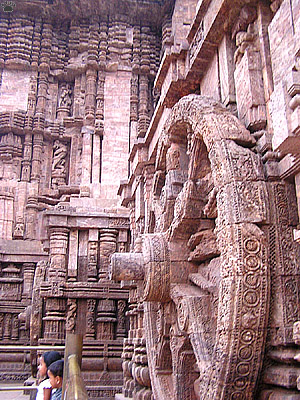
Cartwheel, Sun Temple. |

Entrance stairway, Sun Temple. |
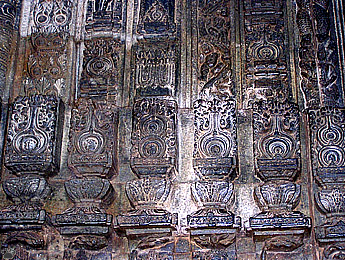
Wall carvings, Sun Temple. |
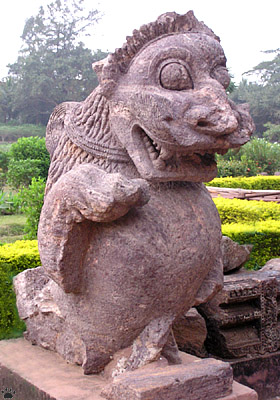
Lion, Sun Temple. |
The entire temple is built like a symbolic chariot with 24 stone cartwheels, pulled by 7 horses (only one of them remains). It is interesting that more than 2500 years after the Aryan takeover of Northern and Central India, their art was still centered around the images of nomadic life in Iranian grasslands: the chariot, the horse, and the lion. Sun Temple also used to have to colossal towers, but none survived. |
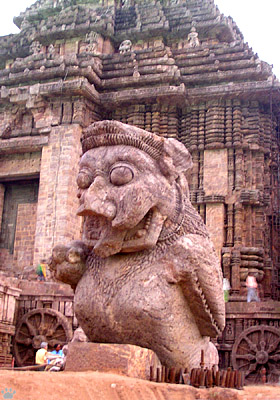
Lion, Sun Temple. |
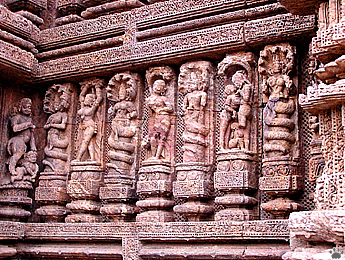 |
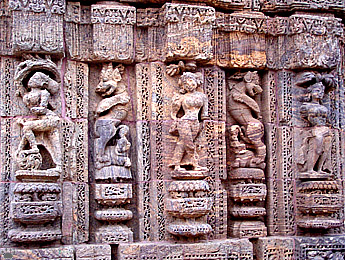 |
| Wall sculptures, Sun Temple. |
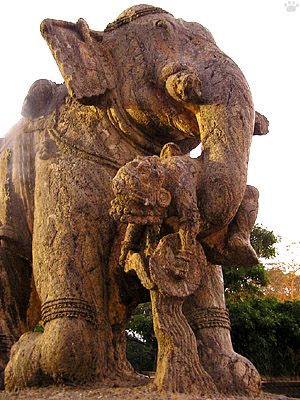
Battle elephant killing a Muslim soldier, Sun Temple. |
Until the British took the site under protection, it was regularly pillaged by local rulers for sculptures and construction stone. But on the parts once covered with the sand dune, some beautiful carvings remain, plus sculptures of lions and battle elephants. |
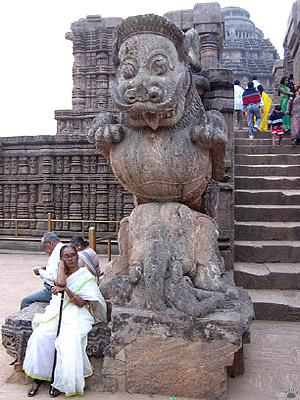
Local tourists, Sun Temple. |

Lingaraj Mandir Temple, Bhubaneswar, Orissa. |

Street goats, Bhubaneswar, Orissa. |
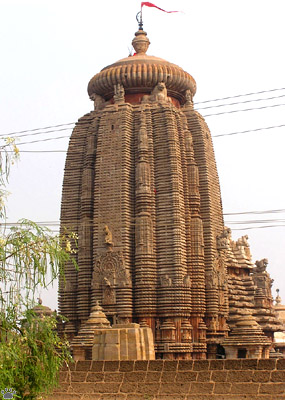
Tower of Lingaraj Mandir Temple. |
Bhubaneswar, the capital of Orissa, is over 2400 years old. It once had about 4000 Hindu temples, but less than 500 have survived the repeated destruction by Muslim invaders. The most interesting is the largest and tallest (54 m/180') temple, Lingaraj Mandir (founded c. 550, built mostly in 1090- 1104). |
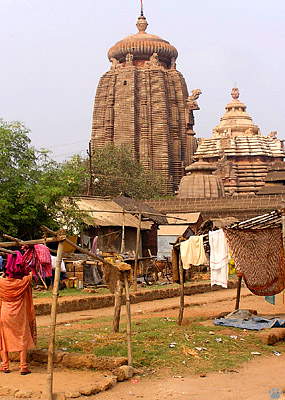
Outside Lingaraj Mandir. |
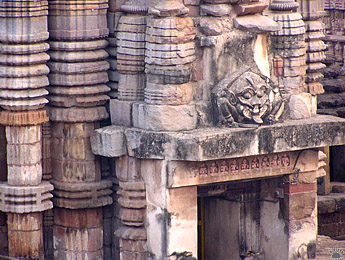 |
 |
| Tower detail, Lingaraj Mandir. |
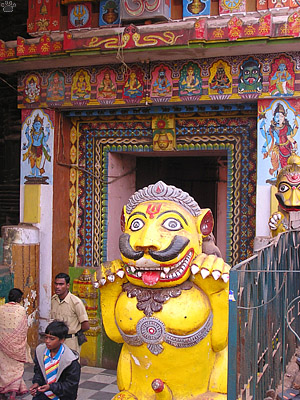
Small streetside temple, Bhubaneswar. |
Spread near the holy Bindu Sagar lake (now a stinking pool of sewage, in which fanatics still take "purifying baths"), the temples chronicle the decline of Hindu culture. Old ones are beautiful and delicate, modern ones gaudy, tasteless and clone-like. |
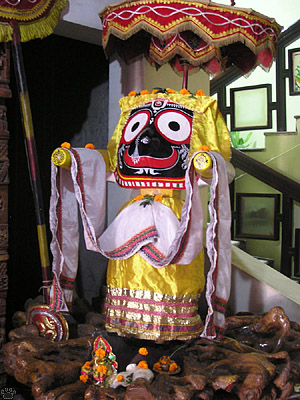
Statue of Lord Jagannath, Bhubaneswar. |
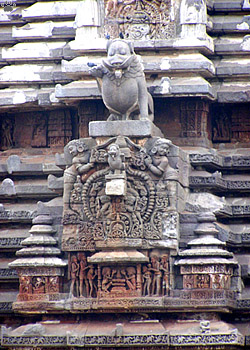
Tower detail, Lingaraj Mandir. |

Brahmini kites (Haliastur indus), Puri. |
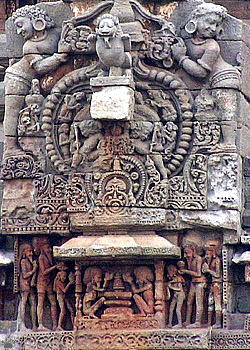
Tower detail, Lingaraj Mandir. |
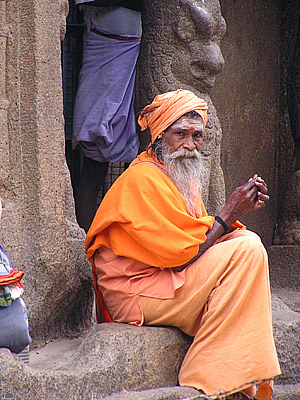
Sadhu, Puri, Orissa. |
The most revered temple of Orissa is Jagannath Temple in Puri (Jagannath is an incarnation of Vishnu, immensely popular locally), built in 1198. Like Lingaraj and most other Hindu temples, it is closed to non-Hindus. |

Jagannath Mandir, Puri, Orissa. |
 |
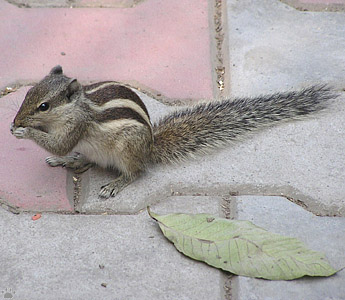 |
| Palm squirrels (Funambulus), Konark. |

Palm squirrels, Konark. |
Just this temple sustains over 20,000 people - clergy, cooks, etc. - plus uncounted feral cows, dogs, crows, pigeons, kites, palm squirrels, mice, rats and cockroaches. Squirrels are cute, but the numbers of human parasites that religion breeds in Indian society are staggering.
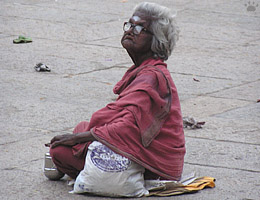
Street beggar, Puri.
There are also numerous street beggars there, but being a beggar in India is tough if you are not a sadhu (professional holy man), or a member of some other recognized category such as hijra castrates. Most people would rather give money to a sadhu than to a starving kid. |
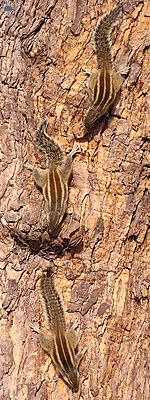
Palm squirrels, Konark. |

Pilgrims on the way to Puri, Chilika Lake, Orissa.
|
Part 15: Southern India
Back to Part 13
Home
|